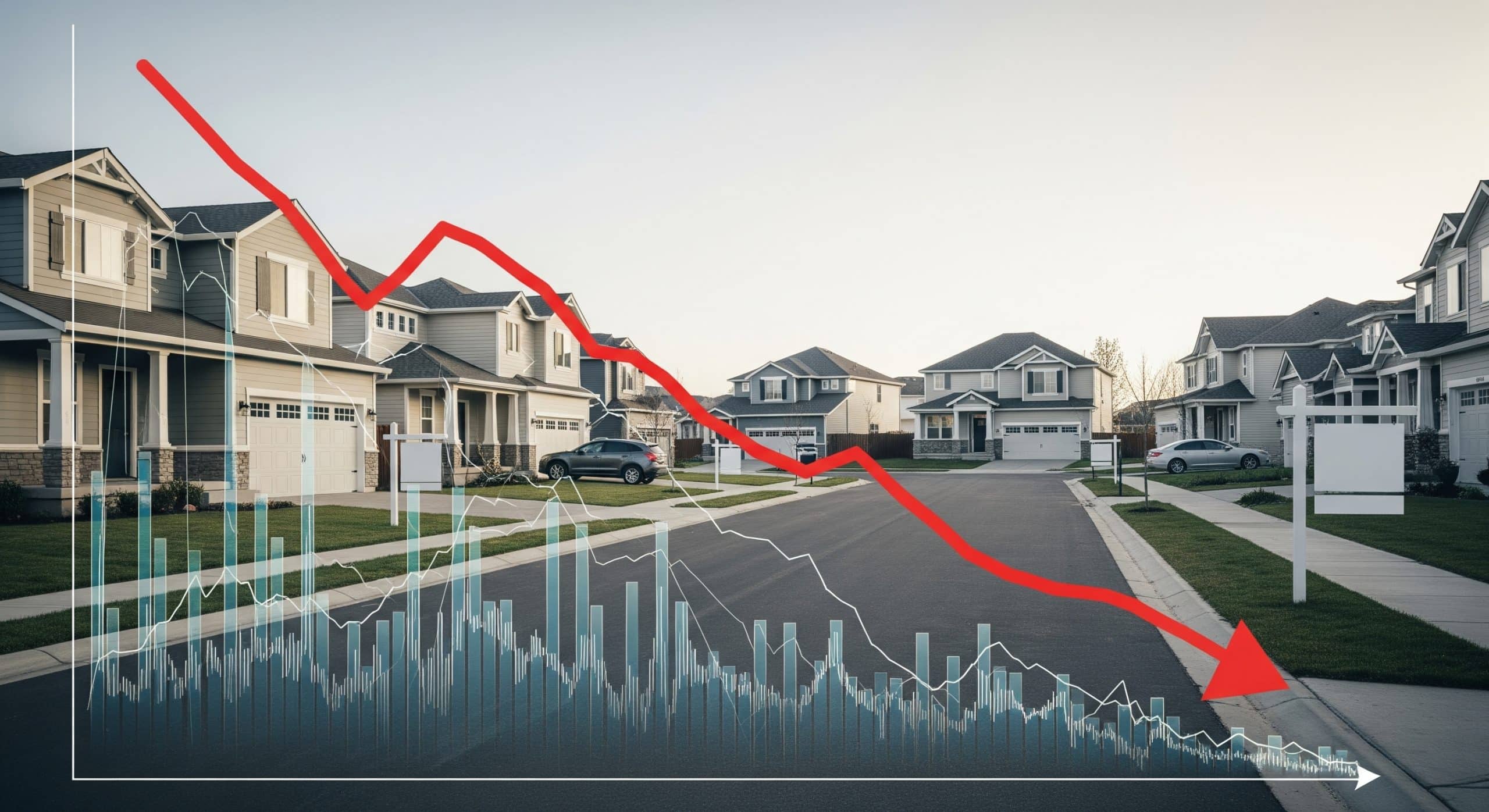General Background
In recent years, the United States has experienced a sharp decline in the share of first-time homebuyers — dropping below the historical average of around 35%, reaching a low of approximately 24% in 2024. This decline is driven by external economic factors: elevated housing prices, mortgage interest rates of around 7% that hinder market entry, and the effects of restrictive monetary policy.
Impact on Capital Markets and Construction Companies
The decline in first-time buyer activity increases pressure on publicly traded homebuilders and ETFs focused on the sector. Leading firms such as D.R. Horton and PulteGroup have reported reduced transaction volumes and compressed margins, despite outperforming expectations in recent quarters. Their profits have been undermined by consumer incentives and high financing costs. Many companies face rising inventory levels alongside sluggish sales, increasing uncertainty regarding future performance.
Real estate and construction ETFs — such as the iShares U.S. Home Construction ETF and the SPDR S&P Homebuilders ETF — have experienced high volatility throughout 2025. After sharp declines at the beginning of the year, they rebounded temporarily due to positive earnings reports. However, continued resilience appears unlikely if interest rates remain elevated and consumer incentives persist.
Interplay Between Real Estate and Financial Institutions
There is a strong economic linkage between real estate markets and capital markets. Rising home prices contribute to the “wealth effect,” encouraging consumer spending through perceived real estate gains. Conversely, bullish stock markets enhance financial wealth, potentially diverting investment away from real estate and toward securities.
Historical studies have shown that long-term declines in equity markets often push investors toward tangible assets like housing for stability. However, as macroeconomic conditions stabilize and capital markets strengthen, investor interest tends to shift away from physical assets and back toward financial instruments.
Current State Analysis – Linkages and Implications
Incentives and Risk Sharing: Builders have been compelled to offer significant incentives (such as covering closing costs, temporary price reductions, and limited-time low interest rates) to attract new buyers. This directly impacts profitability and challenges the long-term viability of current business models.
Shift Toward Rentals and Institutional Investment: As first-time buyers are priced out of the ownership market, demand has surged in the rental sector. Companies like Equity Residential and AvalonBay are experiencing heightened demand, positioning them as more stable investments compared to new home construction.
Bond Market Exposure: Elevated bond yields benefit financial markets but make mortgages more expensive, limiting the ability of construction firms to initiate new projects — thereby negatively impacting real estate equities.
Capital Market Influence: Market volatility, especially following bearish trends, can drive down long-term interest rates and reopen space for housing demand. In contrast, in bullish markets, capital often shifts from real estate development to direct financial investment.
Implications for Capital Market Investors
From an investor’s perspective, trends in the real estate sector must be assessed in relation to yield curves, economic sentiment, and the timing of monetary policy changes. Construction companies and sector-focused ETFs offer exposure to tangible assets but are highly sensitive to interest rates and housing prices. In contrast, residential REITs offer a more stable alternative for those seeking shelter from the decline in first-time homebuying.
Short-Term Forecast
Forecasts suggest that if interest rates fall toward 6%, demand from first-time homebuyers may recover and reinvigorate market activity. If not, the standoff between buyers and limited housing supply will likely continue, potentially resulting in a moderate price correction (up to 5%) — though credit market support and expectations of market stabilization are likely to persist.
Conclusion
The sharp decline in first-time homebuyer participation is not merely a social trend, but a complex financial phenomenon. Real estate developers, construction firms, REIT investors, and ETF managers are all impacted by the dynamic interplay between high interest rates, inflated asset values, and constrained demand from new entrants. At the same time, capital markets may yet reignite housing demand — but only if a new equilibrium emerges between economic expectations and borrowing conditions.
Comparison, examination, and analysis between investment houses
Leave your details, and an expert from our team will get back to you as soon as possible
* This article, in whole or in part, does not contain any promise of investment returns, nor does it constitute professional advice to make investments in any particular field.
To read more about the full disclaimer, click here- orshu
- •
- 7 Min Read
- •
- ago 33 minutes
 European Markets Edge Higher Amid Relief – What Does the New Tariff Agreement Really Mean?
European Markets Edge Higher Amid Relief – What Does the New Tariff Agreement Really Mean?
Modest Gains Following New Trade Deal On Tuesday, July 29, 2025, the leading European stock exchanges recorded moderate gains, following
- ago 33 minutes
- •
- 7 Min Read
Modest Gains Following New Trade Deal On Tuesday, July 29, 2025, the leading European stock exchanges recorded moderate gains, following
- orshu
- •
- 10 Min Read
- •
- ago 52 minutes
 PayPal Shows Stability: Strong Q2 Performance with Growth in Revenue and Profit
PayPal Shows Stability: Strong Q2 Performance with Growth in Revenue and Profit
PayPal Holdings released its financial results for the second quarter of 2025, reporting solid improvements in both revenue and profitability.
- ago 52 minutes
- •
- 10 Min Read
PayPal Holdings released its financial results for the second quarter of 2025, reporting solid improvements in both revenue and profitability.
- orshu
- •
- 9 Min Read
- •
- ago 1 hour
 Why Super Micro Computer (SMCI) Surged Over 10% Yesterday
Why Super Micro Computer (SMCI) Surged Over 10% Yesterday
Super Micro Computer (SMCI) saw a significant jump of over 10% in its stock price yesterday, capturing the attention of
- ago 1 hour
- •
- 9 Min Read
Super Micro Computer (SMCI) saw a significant jump of over 10% in its stock price yesterday, capturing the attention of
- orshu
- •
- 8 Min Read
- •
- ago 2 hours
 BlackRock: Stablecoins Could Cement U.S. Dollar Dominance in the Digital Era
BlackRock: Stablecoins Could Cement U.S. Dollar Dominance in the Digital Era
Why the World’s Largest Asset Manager Believes Tokenized Dollars Are a Strategic Asset In a recent commentary, BlackRock asserted that U.S.-backed stablecoins—such
- ago 2 hours
- •
- 8 Min Read
Why the World’s Largest Asset Manager Believes Tokenized Dollars Are a Strategic Asset In a recent commentary, BlackRock asserted that U.S.-backed stablecoins—such












